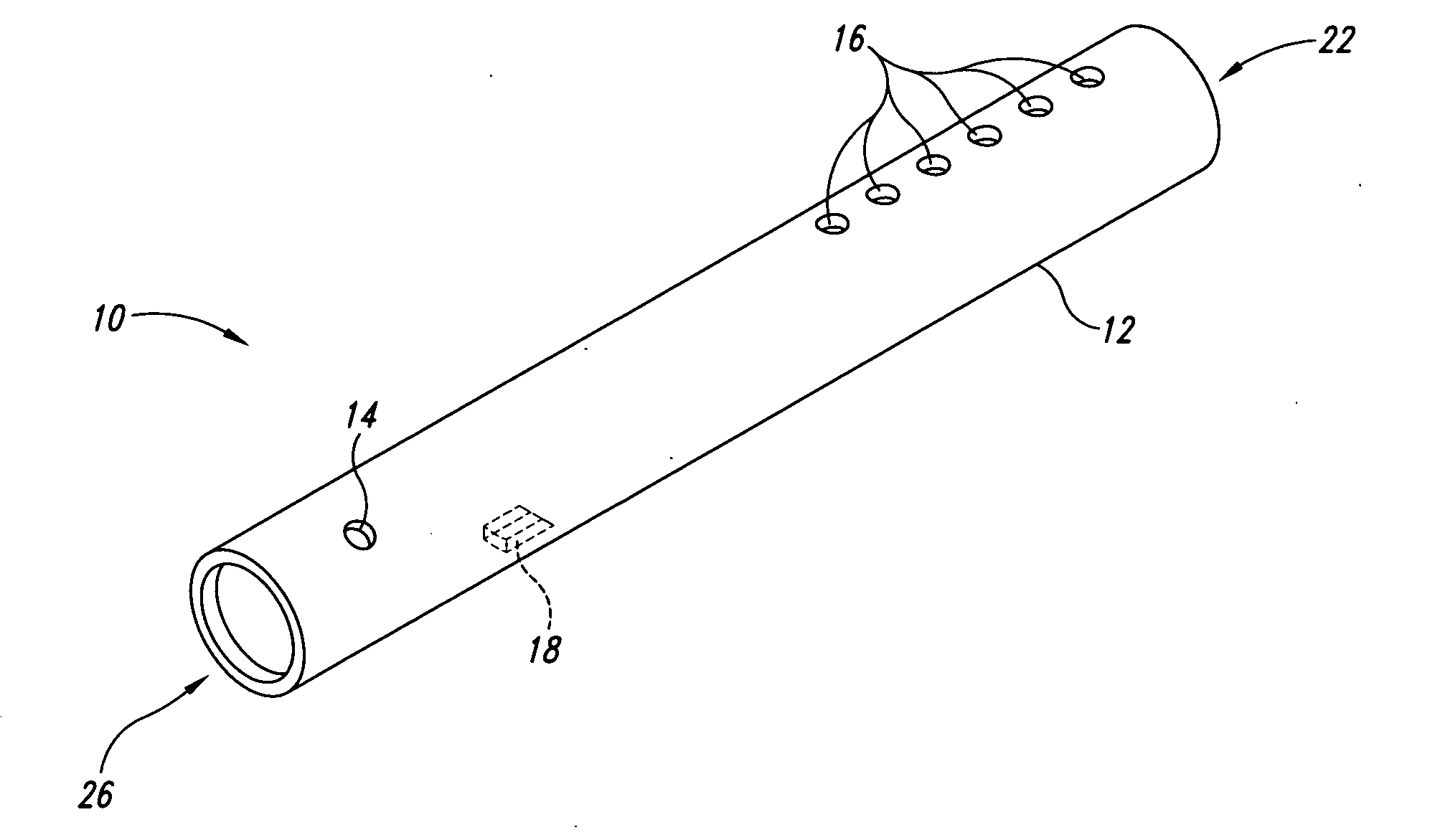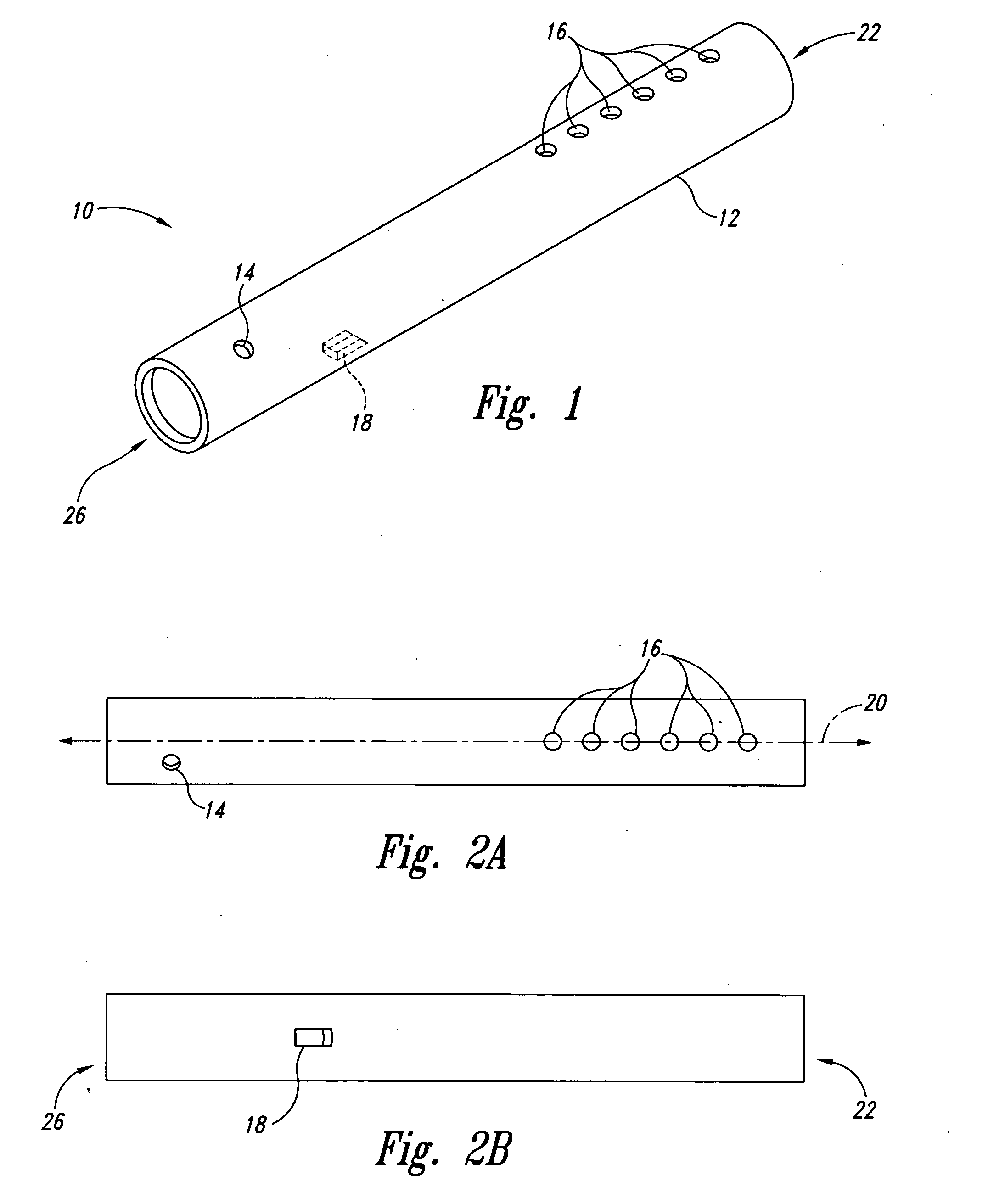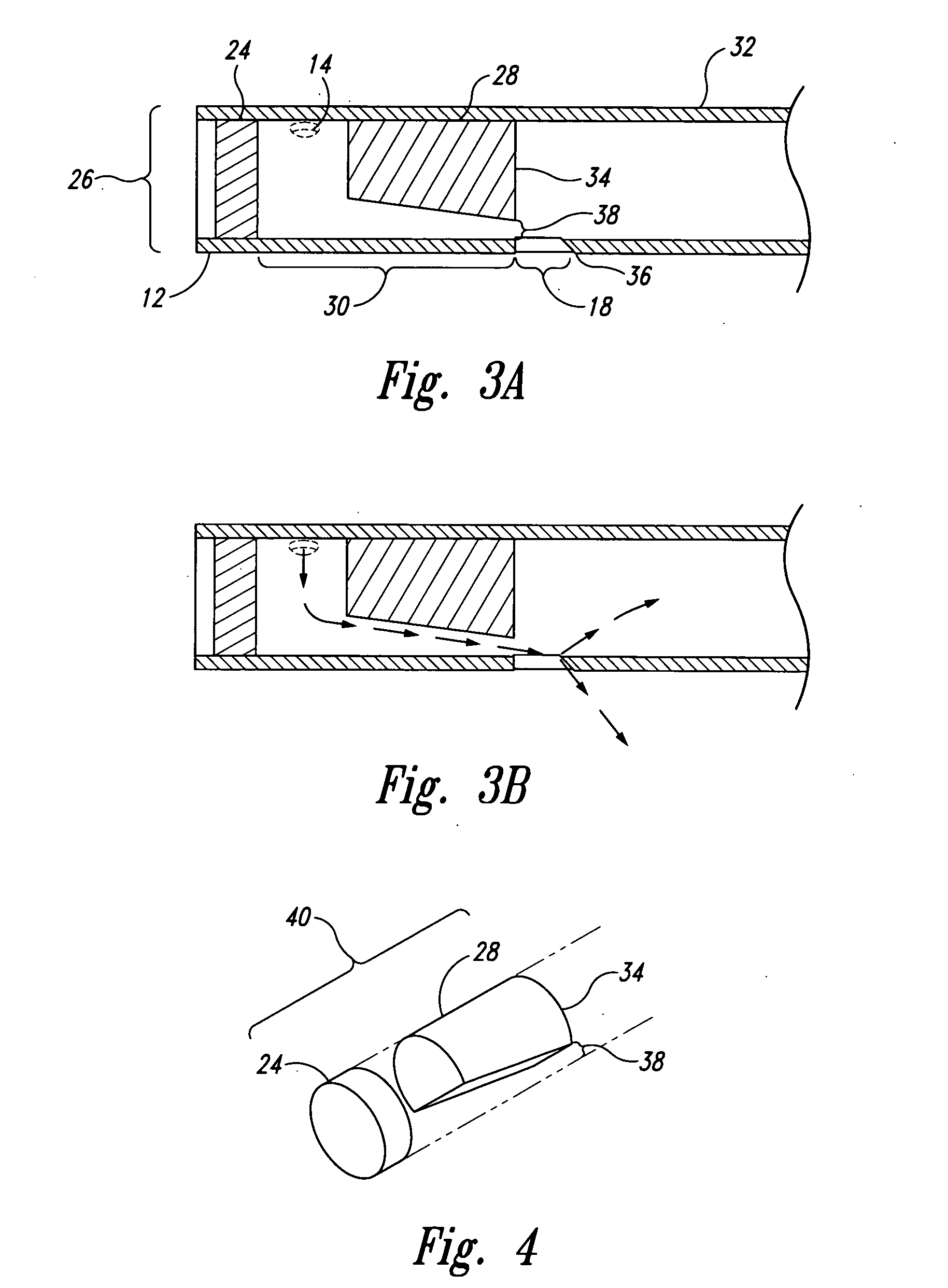Transverse whistle flute and method of playing
a transverse whistle and flute technology, applied in the field of musical instruments, can solve the problems of inferior handling of transverse instruments, difficulty in playing fingers and embouchures, and difficulty in adjusting the flange, etc., and achieve the effects of reducing the difficulty of adjusting the flange, facilitating playing and mastering, and facilitating the adjustment of the flang
- Summary
- Abstract
- Description
- Claims
- Application Information
AI Technical Summary
Benefits of technology
Problems solved by technology
Method used
Image
Examples
Embodiment Construction
[0014]FIG. 1 shows the transverse whistle flute 10 according to the preferred embodiment as it is to be held and fingered by a player. The preferred embodiment comprises a generally cylindrical barrel 12, having generally uniform wall thickness, with a blowhole 14, a series of finger holes 16, and a generally rectangular sound hole 18.
[0015]FIGS. 2A and 2B together show the orientation of all of the holes (14, 16, and 18), which holes are bored through the barrel wall, and their relationships to one another. According to FIG. 2A, one can see that in the preferred embodiment, each of the finger holes 16 is located on the imaginary top reference line 20, which parallels the longitudinal axis of the barrel, and proximate the second end 22, and the blowhole 14 is located approximately 30° measured circumferentially from the top line 20 and proximate the first end 26. Obviously in alternate embodiments, the finger holes may be offset circumferentially from the top line or may be located...
PUM
 Login to View More
Login to View More Abstract
Description
Claims
Application Information
 Login to View More
Login to View More - R&D
- Intellectual Property
- Life Sciences
- Materials
- Tech Scout
- Unparalleled Data Quality
- Higher Quality Content
- 60% Fewer Hallucinations
Browse by: Latest US Patents, China's latest patents, Technical Efficacy Thesaurus, Application Domain, Technology Topic, Popular Technical Reports.
© 2025 PatSnap. All rights reserved.Legal|Privacy policy|Modern Slavery Act Transparency Statement|Sitemap|About US| Contact US: help@patsnap.com



